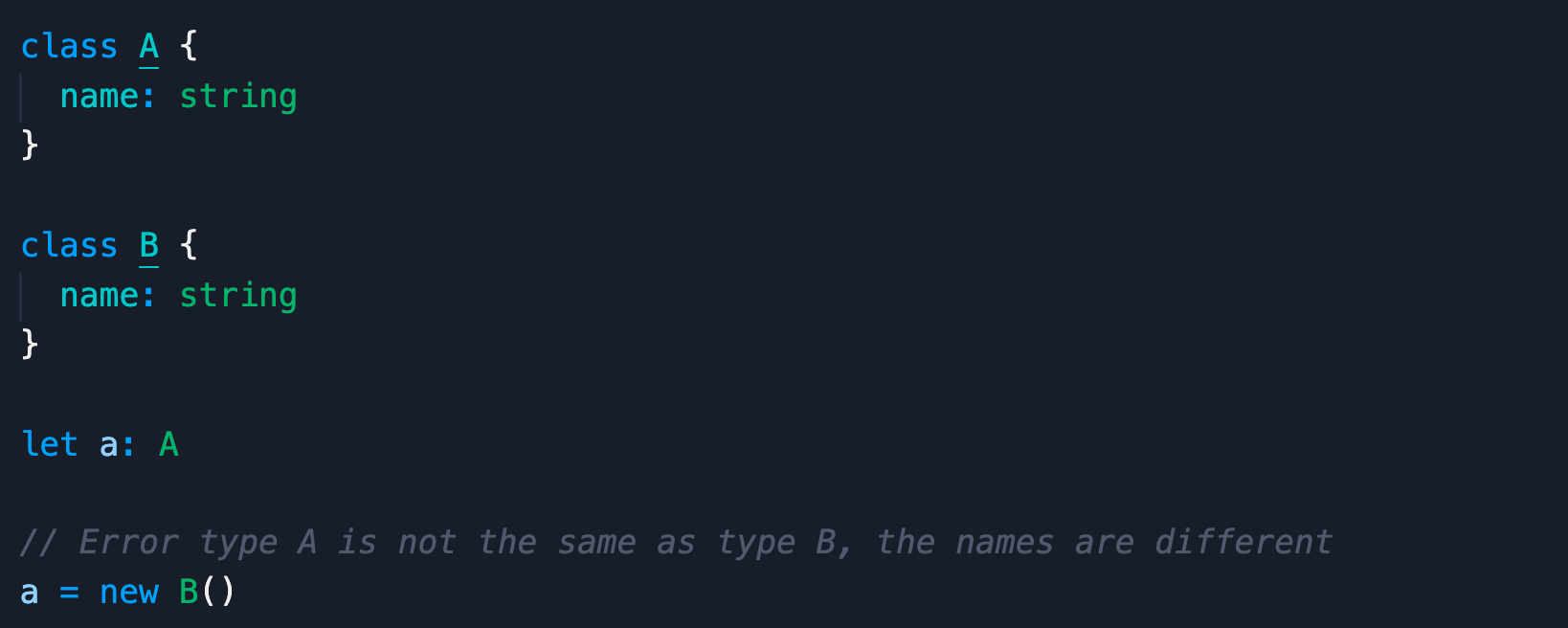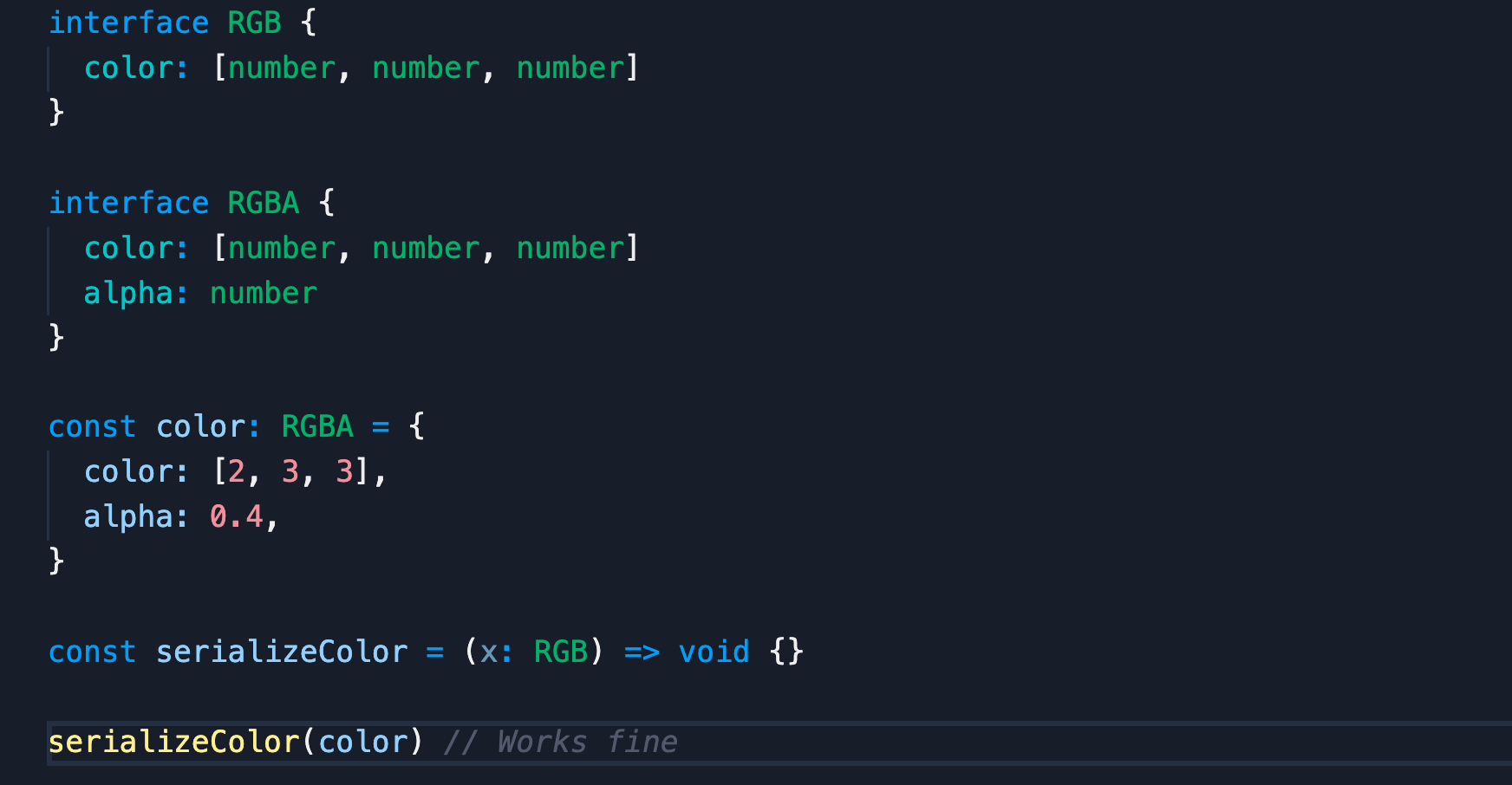Nominal & structural typing
Type systems are typically categorized as either structural or nominal. Languages like Java and Scala have primarily nominal type systems, whereas a language like Typescript has a structural type system. Let’s take a brief look at both systems.
Nominal Typing
In a nominal typing system, type compatibility is checked using the name of the types. If they do not have the same name, then they are not compatible; end of story. **If **Typescript had a nominal typing system the type check for the last line would fail:

Structural typing
Typescript uses structural typing to decide whether two types are compatible with one another or not. What do we mean by structural typing? Well, let’s consider the following code snippet:

To determine whether the type of the constant color(RGBA) is compatible with the type of serializeColor’s parameter x(RGB) the type system must verify that each member of RGB has a corresponding compatible member in RGBA. In this case, RGB has a single member color for which RGBA has a corresponding member with the same type — [number, number, number] — and so it passes the type check. Notice how the type system ignores the additional members that exist on RGBA (alpha).
#typescript #type-safe #type-systems
